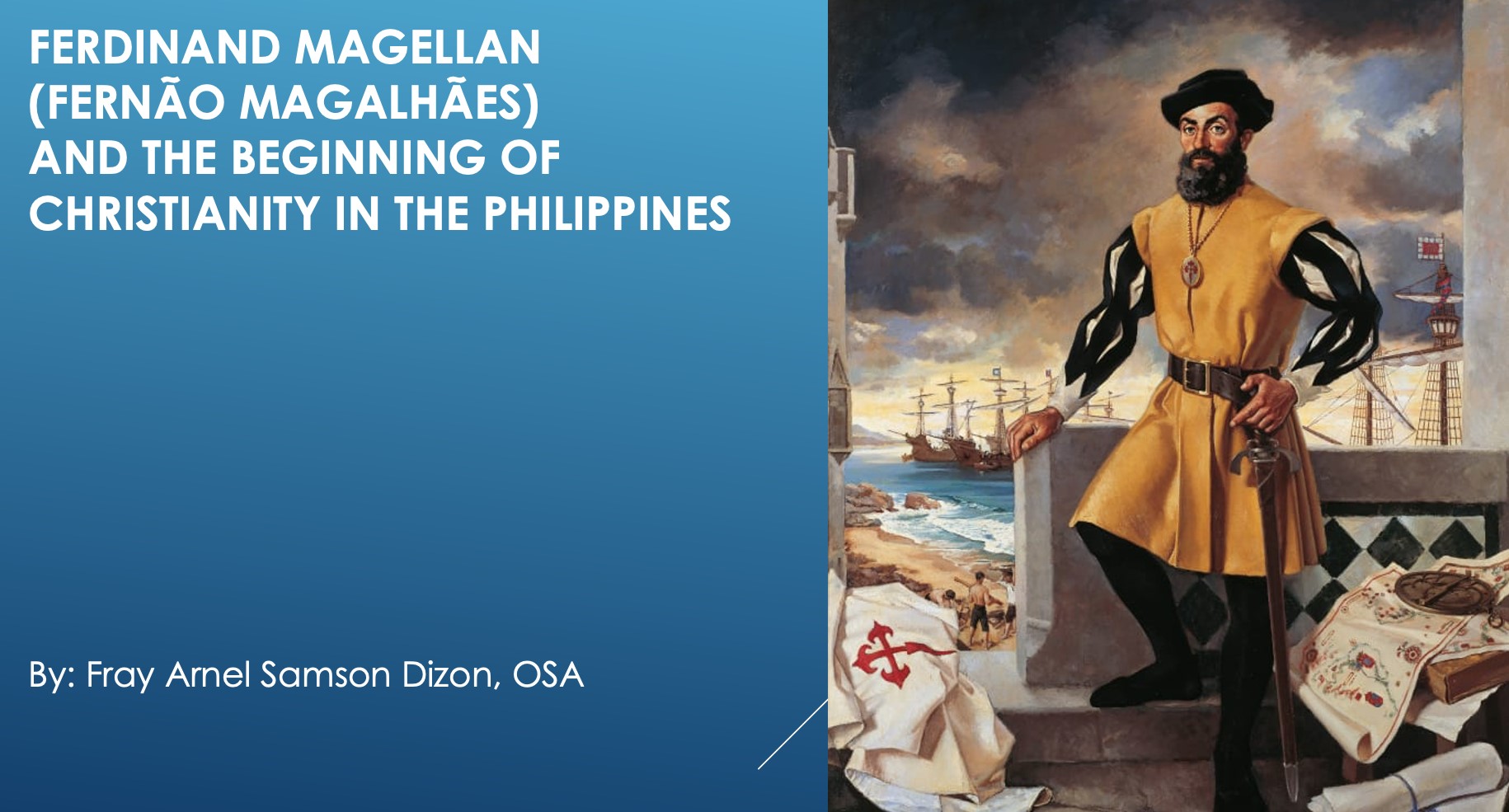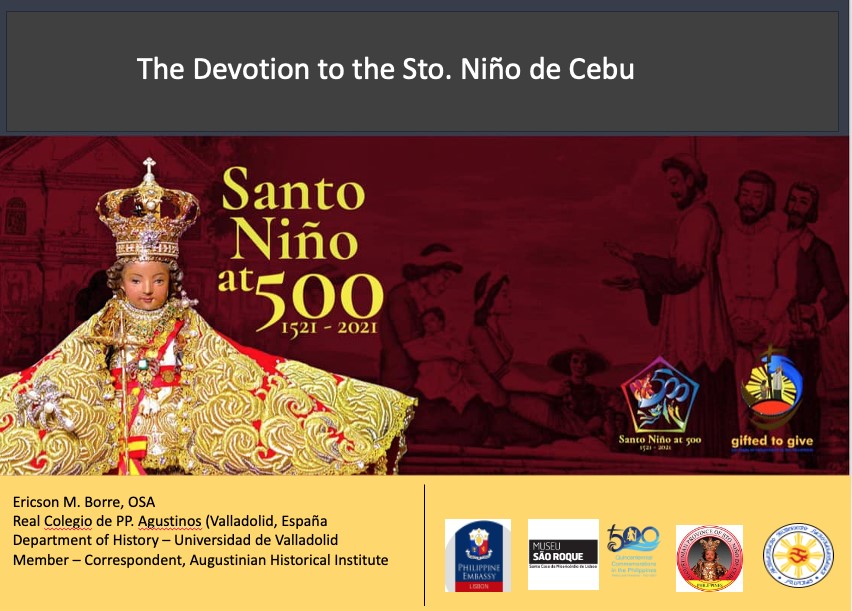

As part of the ongoing exhibition in Lisbon organized by the Philippine Embassy in Portugal entitled “Sto. Niño de Cebu: An Icon of Philippine Culture and History” at the Igreja de São Roque in Lisbon, lectures by the Augustinian friars of Basilica Minore del Sto. Niño de Cebu was held on 14 December 2021 at Sala do Brazao of the adjoining Museo de São Roque.
The lectures focused on two main themes: the Beginning of Christianity in the Philippines and Devotion of the Filipinos to the Sto. Niño de Cebu. Through these lectures, the Philippine Embassy in Portugal aimed to provide the audience with an in-depth discourse on the historical formation of the Philippines’ cultural and religious identity and how the devotion to the Sto. Niño de Cebu is deeply rooted in Filipino culture, as well as how the Sto. Niño’s modern depiction is a reflection of Filipino piety.
Rev. Fr. Nestor Bandalan, Jr. OSA, Museum Director of the Basilica Minore del Sto. Niño de Cebu, shared a presentation on the initial defining moments of the 500 years of Christianity in the Philippines which is mainly grounded on the implantation of the seeds of faith that brought about its developmental processes and implications in the life of the people as a nation and Church through the centuries.

Rev. Father Nestor Bandalan Jr as the Museum Director of the Basilica Minore del Sto. Niño de Cebu shares his knowledge on the introduction of Christianity to the Philippines through Ferdinand Magellan.
Rev. Father Bandalan Jr. discussed how the Portuguese explorer Fernão de Magalhães was instrumental in bringing Christianity to the Philippines as well as the introduction of Christianity in that part of the world. He emphasized in his lecture the introduction of Christianity in the Philippines was marked by two (2) historical events stamped with essential Catholic signs and rituals. First was the planting of the Holy Cross consecrated with the celebration of the First Easter Mass in 31 March 1521 and the gifting by Fernão de Magalhães of the image of the Santo Niño to the wife Rajah Humabon, who was christened as Queen Juana, as the former’s baptismal gift.
After the presentation of Rev. Father Bandalan, Fr. Ericson M. Borre, Filipino Augustinian friar currently assigned at the Real Colegio de los Filipinos Agustinos in Valladolid, Spain spoked about the religious devotion of the millions of Catholic Filipinos to the Sto. Niño, as well as how this devotion has spread outside the boundaries of Cebu and of the Philippines, through Filipino Catholic devotees.
He also presented an explanation about other various icons of the Santo Niño aside from the Santo Niño de Cebu present in the Philippines and how each has its own unique peculiarities but nonetheless represents the same entity, the baby Jesus.

Fr. Ericson M. Borre, Filipino Augustinian friar currently assigned at the Real Colegio de los Filipinos Agustinos in Valladolid, Spain discusses on how the devotion to the Sto. Niño is being celebrated today.
Through the support of the Estrutura de Missão para as Comemorações do V Centenário de Fernão de Magalhães (EMCFM), the Portuguese counterpart of Philippines’ National Quincentennial Committee (NQC), the lectures were simultaneously translated into Portuguese to provide the Portuguese audience a better understanding and appreciation of our narratives, culture and heritage. Furthermore, to avoid the spread of the new COVID19 variant and to accommodate a wider range of audiences, the lectures were also streamed online through the Zoom platform.
This activity forms part of the many cultural projects of the Philippine Embassy in commemoration of
the 5th centennial of the circumnavigation of the world by the Magellan-Elcano expedition and the Philippine part in this epic voyage, as well as the introduction of Christianity in the Philippines and the role that Portuguese explorer Fernao de Magalhaes played in bringing the Sto. Niño to Cebu 500 years ago.
Another series of lectures will be held on 26 January 2022 by Portuguese experts from the Centro de Humanidades of the Universidade NOVA de Lisboa to discuss topics on the contribution of Portuguese cartography in locating the First Mass in the Philippines and the Infant Jesus and the practice of dressing images in the Modern Period. END

